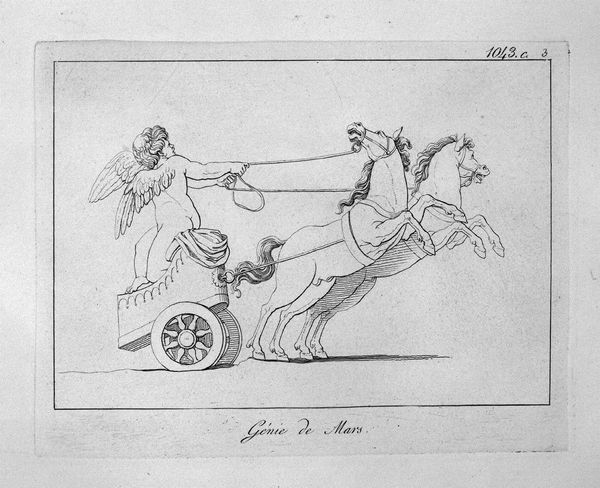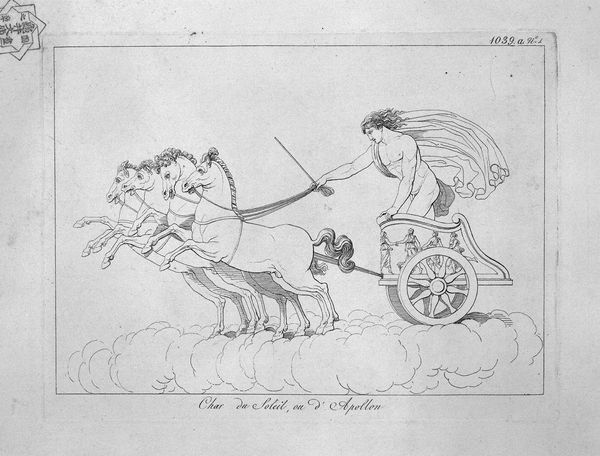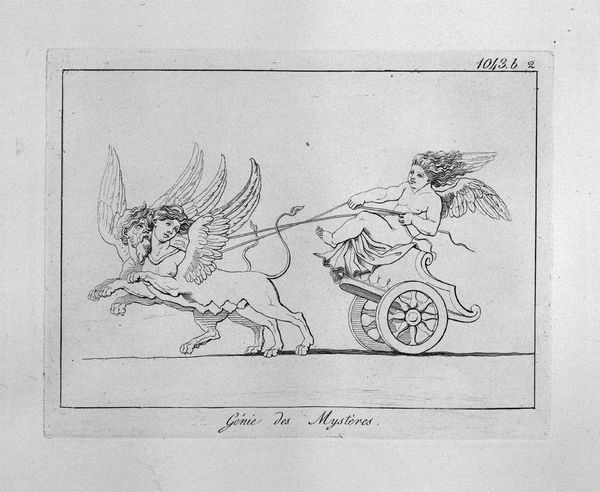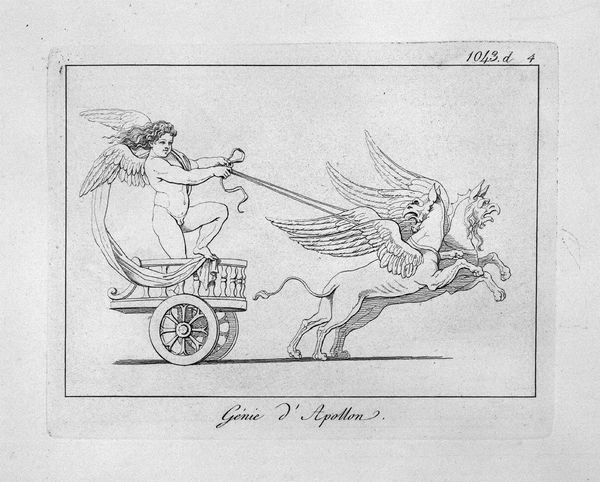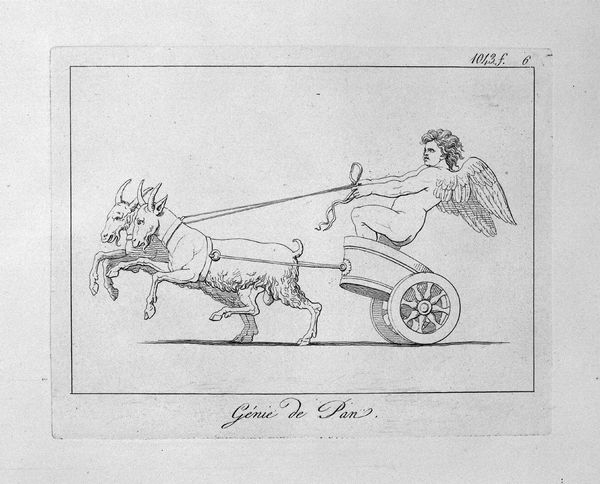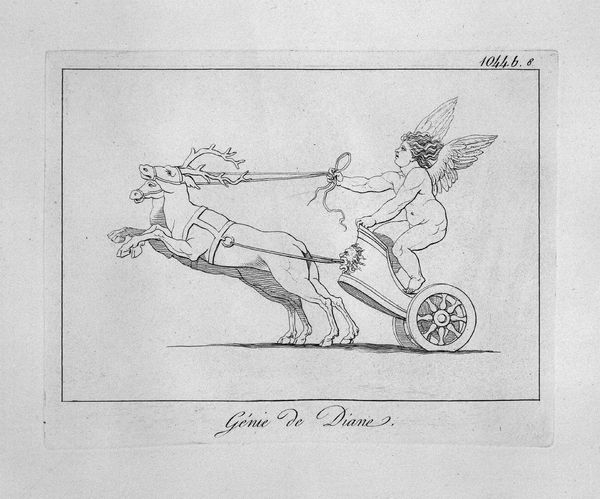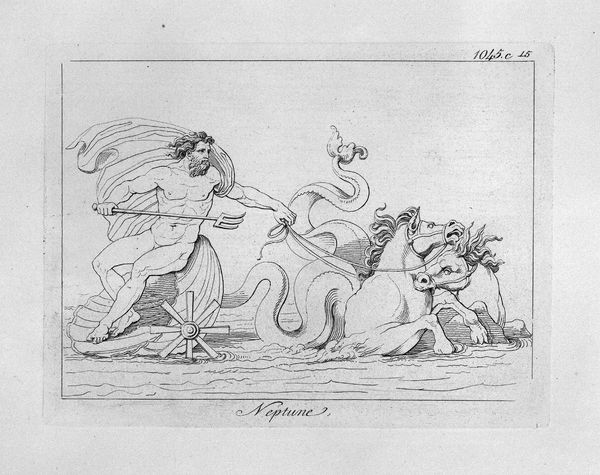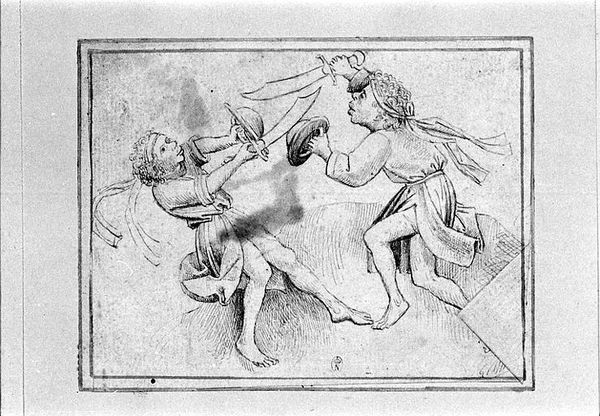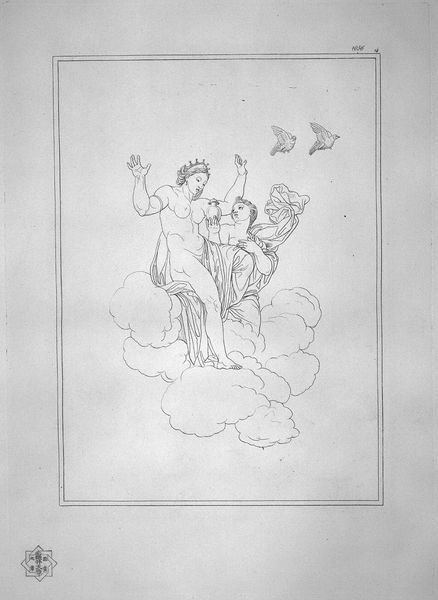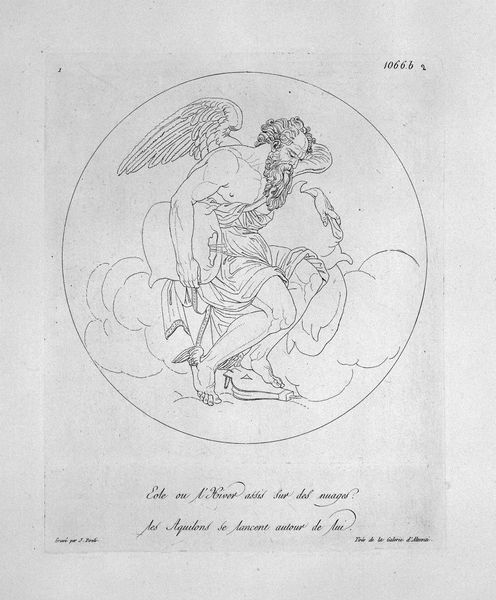
drawing, print, engraving
#
drawing
#
neoclacissism
# print
#
landscape
#
figuration
#
roman-mythology
#
mythology
#
line
#
sketchbook drawing
#
engraving
Copyright: Public domain
Editor: Here we have Giovanni Battista Piranesi’s "Genius of Bacchus," an engraving rendered in delicate lines. There’s a playful yet slightly unsettling feeling about it – a winged child driving a chariot pulled by lions. What do you see in this piece? Curator: I see a potent commentary on power, control, and the exoticization of nature within a specific socio-political context. Piranesi, working during a time of intense colonial expansion, invokes classical imagery to subtly critique contemporary power structures. Note the child-like figure wielding the reins: this speaks to the often-infantilizing dynamic between colonizer and colonized. How might we interpret the use of lions, animals historically associated with strength and the 'exotic', as symbols within this framework? Editor: That's a fascinating point. So, the child figure isn’t just a decorative cherub, but an active participant in a power dynamic? Curator: Exactly! It forces us to confront the uncomfortable realities embedded within seemingly harmless aesthetics. The Neoclassical style often glossed over the harsh realities of the time, using idealized forms to legitimize existing hierarchies. Consider the contrast between the refined lines of the chariot and the wildness of the lions. What does that tension tell us? Editor: It suggests a struggle, a subjugation of natural forces for human ambition. I hadn't considered it beyond the surface beauty. Curator: Piranesi was deeply engaged in questioning the romanticized vision of ancient Rome prevalent in his time. Through works like these, he invites us to interrogate how classical forms have been historically deployed to uphold specific political and social agendas. Editor: This really shifts my understanding of Neoclassical art. I’ll definitely look at the other works from the era with fresh eyes. Thanks! Curator: My pleasure. Thinking critically about these visual relationships, even when uncomfortable, is a crucial part of engaging with art history as a reflection of broader societal narratives.
Comments
No comments
Be the first to comment and join the conversation on the ultimate creative platform.
